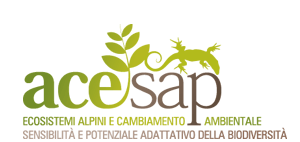BIBLIOGRAFIA |
| D'ALELIO D., GANDOLFI A., TOLOTTI M., BOSCAINI A., FLAIM G., CERASINO L., GUELLA G., SALMASO N. |
| 2009 |
| Genetic diversity and adaptive traits in the filamentous cyanobacterium Planktothrix rubescens. |
| BOTTARIN R., SCHIRPKE U., TAPPEINER U. (EDS), Dalle vette alpine alle profondità marine: programma e riassunti; XIX Congresso S.iT.E Società Italiana di Ecologia; Bolzano 15-18 settembre 2009. |
| LAVIS (TN): ESPERIA, 2009. |
| :152 |
| BOTANICA |
| Planktothrix rubescens is a freshwater filamentous cyanobacterium known to produce microcystins. This algae is usually found in deep mesotrophic lakes in temperate zones, where it can produce red water blooms during the summer. In particular, this species is an important component of planktonic communities in some Italian sub‐Alpine lakes (e.g. Como, Garda, Idro). Within the framework of the project ACE‐SAP, P. rubescens will be used as a model organism for an autecological and microevolutionary study aimed at evaluating the adaptive potential of wild populations of this species in colonizing aquatic environments of Northern Italy. The crucial goal of this three‐year integrative investigation is to study, at both the ecological and genetic level, gas vesicle‐mediated buoyancy, a complex and major adaptive trait of filamentous cyanobacteria in general. In practice, natural populations of Planktothrix rubescens are collected from a set of key lakes – distributed along morphometric, altitudinal and trophic gradients – where water temperature, light and chemical dynamics are currently investigated in detail. Single filaments are brought into culture and characterized genetically, physiologically and metabolomically with the ultimate intention of linking the populations’ characteristics to environmental patterns and/or stressors in different lakes. In particular, we will i) characterize genes involved in the production of gas vesicles (gvp genes); ii) study the buoyancy ability and physiological performance in cultures grown under controlled conditions and iii) define the profile of secondary metabolites (including cyanotoxins) in association with different environmental and/or laboratory stresses. The ACE‐SAP project will provide relevant information on the potential of P. rubescens to form harmful blooms, necessary to assess this species adaptive ability for water use and human health implications. |






